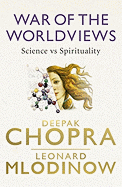What’s so ‘DESI’ about ‘DESI GHEE’?

The fear of fat seems to be driving the humble DESI GHEE from our Indian kitchen. But we have been using ghee for almost 5000 years. So what’s the deal with this ‘DESI GHEE’?
Hope those divine Diwali sweets have been gobbled up by now. Ever wondered how many of them were made in ‘Desi Ghee’. Gone are the good old days when a family elder insisted that we eat home-made-sweets because ‘Beta yeh shudh DESI GHEE mein bana hai’. What’s the deal with the ‘desipann’ in the ghee? And what’s so ‘desi’ about ‘desi ghee’? Why is Ghee still advertised as ‘Asli’ Ghee – does that mean there is something called ‘nakli’ ghee?
‘Desi’ ghee, as we know, is ghee made in our home, without any
adulteration, totally organic and pure (hope the milk from which it’s made is that way too). ‘Desi’ means country-style-original-traditional and doesn’t indicate anything savagely Indian. So why do persevere to use the word ‘Desi’ for ghee? Is it a marketing gimmick or ‘ghee-mick? Is it due to the rich flavor that ghee gives to food?
It’s become a fashion these days to look at any oil with suspicion of clogging our arteries. Everytime I see the ghee-soaked-ghee-dripping-‘Maalpua’ in a sweet shop I feel sorry for the person who consumes this high fat indulgence. I wonder if there could be a ‘fat-free maalpua’. We feel guilty when we eat anything fried in oil, what to say about when we make them in or with ghee. No doubt food made in ghee has a distinct flavour. But given the modern literacy on fat, is ghee healthy is a topic for debate.
Ghee to us is still auspicious because it’s not something you add just to food. Like we all do Ghee has uses in temples, in the alter of our homes for the diya lamp, used for skin ailments or as a skin tonic. My friend from Punjab tells me that, even today in Punjab this ‘Shudh Desi Ghee’ is massaged into the scalp of children and applied as a facial. The traditionalists justify this practice by saying it’s all for the ‘chamak’ (glow) in the face and for making the hair ‘resham’ (smooth and bouncy).
We associated ghee with indulgence and abundance but it has become the first item to be eliminated while moving towards a healthier diet. In contrast, the ancient system of natural medicine of India ~ Ayurveda ascribes a number of health benefits to ghee consumption, such as improved mental functioning, glowing skin and longevity. Ayurveda journals insist that ghee contains a high percentage of ‘good fats’ that are essential for our body.
The purpose of this column isn’t about nutritional advice on ghee but to present an edifying perspective on something that has been consumed since Vedic times going back over 5,000 years. Obviously the best person to consult about ghee is a qualified Ayurveda consultant.
The word ghee comes from Sanskrit ‘ghrita’. A Sanskrit verse says “aayurghritam” meaning – ‘Ghee is life’. It has a sacred role in Vedic Hindu libations and anointment rituals as evinced in the Yajurveda. The old Rigveda mentions in many places about butter and ghee. In ancient India, healing wells full of ghee were made and saved for times of war, especially for those who suffered wounds. In the Vedic culture of ancient India ghee is supposed to be made only on the full or waxing moons, just like even today in many of the villages of rural Italy, Mozzarella is only made on the waxing or full moons.
All Indian and western practitioners of Ayurveda praise the medicinal properties of organic desi ghee. The Ayurvedic textbook ‘Caraka Samhita’ says
“Cow ghee promotes memory, intellect, power of digestion, semen, ojas, kapha and fat”.
An ancient Indian proverb states that “One hundred-year-old ghee can cure anything.” Ghee has its place in many Hindu religious rituals and sacraments.
However a common question that is asked is “How is Ghee with cholesterol?” Kathryn Feldenkreis, in her book, ‘Ghee-A Guide to the Royal Oil’, explains,
‘‘Cholesterol itself is not harmful but becomes harmful when it is partly broken down or oxidised by unstable chemicals called free radicals. Ghee, and particularly organic ghee, has no oxidised cholesterol or trans-fatty acid and is very stable at higher cooking temperatures.’’
What about fat and the use of ghee in Ayurveda? The Mind-Body guru Deepak Chopra says
“The fear that people have for high cholesterol is quite far off-the-mark. Because, results have shown that it is totally unfounded. Why? Dietary intake of cholesterol doesn’t control cholesterol levels; it’s your body’s metabolism that controls cholesterol levels. A lot of it has to do with your constitutional body type and genetics. We are not sure if cholesterol is damaging. It may be the [peroxide] toxic by-product of fat.”
Jo bhi ho, ‘GHEE’ is still a ‘DESI’ indulgence. Even the Bollywood He-man Dharmendra paaji, who is a brand ambassador for Pure Ghee, has apparently attributed the secret behind his success to pure ghee and milk. Don’t know if this would help stem Ghee’s obliteration from our kitchens.
But guess what! Here’s some Desi information – India still produces some 9,00,000 tons of ghee annually. This is no “ghee-mick”!!!






